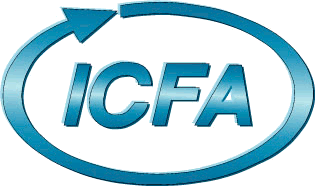
 |
Beam Dynamics Panel |
| Welcome | Mission | Resources | Events | Members |
Resources
The theme of this issue is e+e- Colliders: Past and Present Experiences and Future Frontiers.There are 27 excellent articles in four categories: (1) The fruitful factories: DAΦNE, PEP-II and KEKB; (2) A glorious past: LEP, CESR and VEPP-4M; (3) An exciting present: BEPC-II and VEPP2000; and (4) The challenging future: SuperB, SuperKEKB and BINP c-tau. These articles give a comprehensive review of this very important accelerator field by experts from all over the world and will no doubt serve as a valuable reference for every accelerator physicist who works or plans to work on e+e- colliders.
Planning the construction of a collider means first of all, once the energy range is chosen, to fix a goal value for the peak luminosity, and consequently choose a design strategy to reach that goal. In designing a storage ring the operational experience of similar, existent machines is a valuable hint for what nature has allowed in that field. In this respect, a catalogue of characteristics and performances can be a very useful tool when designing new colliders or comparing operating machines.
EuCARD: European Coordination for Accelerator Research & Development. Its main goal is to upgrade the large European research accelerators by R&D on innovative concepts and techniques, thereby offering researchers the best facilities. This common venture will strengthen durable collaboration among the partners and will contribute to the development of world-class infrastructures, one of the main features of the European Research Area.
TIARA: Test Infrastructure and Accelerator Research Area. The main objective of TIARA is the integration of national and international accelerator R&D infrastructures into a single distributed European accelerator R&D facility. This will include the implementation of organizational structures to enable the integration of existing individual infrastructures, their efficient operation and upgrades, and the construction of new infrastructures as part of TIARA.
|
Links |
|||||||||||||||
The goal of the workshop is to bring together experts from the scientific communities working on low emittance lepton rings. This includes damping rings, test facilities for linear colliders, B-factories and electron storage rings. The theme will be common beam dynamics and technology challenges for producing and controlling ultra-low emittance beams and the participants will benefit from the experience of colleagues who have designed, commissioned and operated such rings. This is the second in a series of workshops initiated in 2010 (http://ler2010.web.cern.ch), by the joint CLIC/ILC working group on damping rings. During the 1st workshop and subsequent discussions, it was found that the state of the art in the design of accelerator systems in X-ray storage rings approaches the goals of linear collider damping rings and future e+/e- circular collider upgrade projects. This workshop specifically targets the strengthening of interactions within the low emittance ring community by forming a LOWεRING collaboration network. |